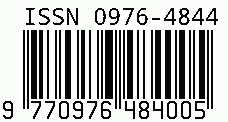
Journal of Advances in Developmental Research
E-ISSN: 0976-4844
•
Impact Factor: 9.71
A Widely Indexed Open Access Peer Reviewed Multidisciplinary Bi-monthly Scholarly International Journal
Plagiarism is checked by the leading plagiarism checker
Call for Paper
Volume 16 Issue 2
2025
Indexing Partners



















Optimizing Omnichannel Retail in SAP: Streamlining Inventory Allocation and Scaling Purchase Order Massification
| Author(s) | Manykandaprebou Vaitinadin |
|---|---|
| Country | United States |
| Abstract | Omnichannel retailing has revolutionized the retail industry by enabling seamless customer experiences across multiple sales channels. However, managing inventory allocation and purchase order massification within SAP systems remains a significant challenge. This paper explores strategies for optimizing inventory allocation and scaling purchase order massification within SAP, leveraging advanced functionalities and automation. The study highlights the benefits of integrating SAP modules, artificial intelligence (AI), and machine learning (ML) to enhance efficiency. By addressing challenges and limitations, the paper provides recommendations for future improvements and strategic adoption in the evolving retail landscape. |
| Keywords | Omnichannel Retail, SAP, Inventory Allocation, Purchase Order Massification, Supply Chain Optimization, Machine Learning, AI In Retail, Retail Automation |
| Field | Engineering |
| Published In | Volume 15, Issue 2, July-December 2024 |
| Published On | 2024-07-04 |
| Cite This | Optimizing Omnichannel Retail in SAP: Streamlining Inventory Allocation and Scaling Purchase Order Massification - Manykandaprebou Vaitinadin - IJAIDR Volume 15, Issue 2, July-December 2024. DOI 10.5281/zenodo.14993237 |
| DOI | https://doi.org/10.5281/zenodo.14993237 |
| Short DOI | https://doi.org/g87f77 |
Share this


CrossRef DOI is assigned to each research paper published in our journal.
IJAIDR DOI prefix is
10.71097/IJAIDR
Downloads
All research papers published on this website are licensed under Creative Commons Attribution-ShareAlike 4.0 International License, and all rights belong to their respective authors/researchers.

